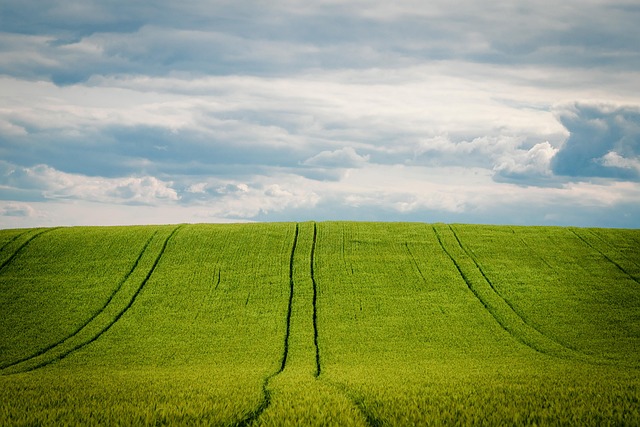In the world of photography, the grain effect has evolved from a defect to a deliberate aesthetic choice. Whether shooting with a high‑ISO sensor, a vintage film cartridge, or a modern medium‑format camera, photographers harness grain to add texture, mood, and narrative depth. This article explores how exposure settings, lens characteristics, and post‑processing decisions shape the grain effect, and provides practical guidance for mastering it across both analog and digital domains.
What Is the Grain Effect?
Grain refers to the visible random arrangement of light and dark specks that appear in a photograph. In film, it originates from silver halide crystals that develop during printing. In digital sensors, it manifests as sensor noise—primarily readout and photon shot noise that becomes noticeable at high ISO or low light. Though historically considered undesirable, contemporary photographers exploit grain to evoke nostalgia, emphasize texture, or create a gritty atmosphere.
Technical Foundations of Grain
The grain effect is fundamentally tied to exposure physics. Two core concepts—ISO sensitivity and aperture—directly influence grain visibility.
- ISO Sensitivity: Higher ISO values amplify sensor signal but also amplify noise. At ISO 1600 and beyond, digital sensors produce pronounced grain that can be used creatively.
- Aperture and Depth of Field: A wide aperture (small f‑number) yields a shallow depth of field, masking grain in the background. Conversely, a narrow aperture (large f‑number) brings more detail into focus, making grain more apparent.
In film, grain size is dictated by the emulsion type: fine‑grain stocks produce subtle specks, while coarse‑grain stocks generate bold, expressive texture. Photographers choose the appropriate stock based on the desired grain effect.
Digital vs Film Grain
While both mediums exhibit grain, their origins differ:
“Digital noise is a statistical artifact of light measurement, whereas film grain is a physical manifestation of silver halide crystals. Each offers a unique tonal palette for the photographer.”
Digital grain can be controlled with in‑camera noise reduction settings or post‑processing tools. Film grain, once captured, is fixed; however, printing techniques and post‑processing on film scans allow some manipulation.
Controlling the Grain Effect
Mastering grain begins with deliberate exposure decisions. Below are key strategies:
- Set ISO Wisely: Use the lowest ISO that still yields acceptable exposure. If grain is desired, raise ISO deliberately rather than relying on sensor noise.
- Adjust Aperture and Shutter Speed: A faster shutter speed can freeze motion but may require higher ISO, increasing grain. Balance motion, depth of field, and grain accordingly.
- Utilize Post‑Processing: Digital grain can be added or reduced in editing software. Techniques include adding noise layers, adjusting clarity, or using grain presets.
- Print on Matte Paper: For film, choosing matte or glossy paper affects grain visibility. Matte paper enhances grain texture, while glossy paper tends to smooth it.
Creative Uses of Grain
When applied thoughtfully, the grain effect can transform a simple image into a storytelling masterpiece. Here are several creative approaches:
- Vintage Nostalgia: Emulate 1940s war photography or early 2000s street shots by selecting fine‑grain or medium‑grain film stock.
- Atmospheric Mood: Use coarse grain to convey bleakness or tension in urban or nature scenes.
- Texture Emphasis: Highlight natural textures—such as bark, skin, or fabric—by allowing grain to complement the subject’s own granularity.
- Experimental Art: Combine grain with high contrast, muted color palettes, or abstract compositions for avant‑garde works.
Case Study: Portrait Grain
Consider a portrait taken at ISO 3200 on a DSLR in low light. The resulting grain adds an intimate, almost cinematic feel. By selectively sharpening the subject’s face while leaving the background soft, the grain accentuates the texture of the skin and lends a timeless quality to the image.
Practical Tips for Every Photographer
Whether you’re a seasoned professional or an enthusiastic hobbyist, these quick tips will help you manage the grain effect effectively:
- Know Your Equipment: Understand how your camera’s sensor responds to ISO and how your lenses affect contrast and sharpness.
- Test in Controlled Settings: Take a series of shots at different ISOs and apertures to observe grain behavior before shooting an important event.
- Use RAW Format: RAW files retain maximum data, allowing for fine control over noise reduction and grain addition during post‑processing.
- Apply Selective Noise Reduction: In editing, reduce grain only where you want smoothness; preserve it in areas that benefit from texture.
- Experiment with Lens Filters: Certain filters (e.g., polarizers) can alter light levels, indirectly influencing grain visibility.
Equipment Considerations
The grain effect is not just a software trick; the hardware you choose sets the stage.
Camera Sensors
Full‑frame sensors typically produce less visible grain at a given ISO compared to APS‑C or Micro‑Four‑Thirds sensors, thanks to larger pixel size and better light gathering. However, high‑resolution sensors can reveal more subtle grain, useful for detailed work.
Lenses
Prime lenses with wide apertures (e.g., f/1.4 or f/1.8) provide shallow depth of field that can mask grain, while zoom lenses with smaller maximum apertures (e.g., f/4.0) expose more grain by default.
Film Stocks
Choosing the right film stock is crucial. For instance, Kodak Tri-X 400 offers a classic grainy look suitable for black‑and‑white street photography, whereas Fujifilm Pro 400H delivers a softer, finer grain ideal for portraits.
Advanced Techniques for Grain Mastery
Once comfortable with basic grain manipulation, photographers can explore more nuanced methods:
- Multi‑Exposure Grain: Stack images taken at different ISOs to create a composite grain pattern that combines fine and coarse textures.
- Color Grain Enhancement: In color photography, emphasize grain on specific color channels (e.g., green or blue) to influence mood subtly.
- Dynamic Grain Scaling: Use tools like Photoshop’s “Reduce Noise” slider to selectively increase grain on specific layers, maintaining overall image quality.
- Film Emulation Plugins: Software such as DxO FilmPack or Nik Collection offers realistic film grain presets that emulate various emulsion types.
- Hybrid Techniques: Combine digital grain with printed film stock by photographing a digital image onto physical film (cross‑processing) and then scanning the result.
Integrating Grain into Your Workflow
To make grain a reliable element of your creative toolkit, embed it into every stage of your workflow:
- Pre‑Shoot Planning: Decide on the desired grain level before setting exposure, especially for editorial or commercial work where consistency matters.
- In‑Camera Settings: Use ISO and aperture combinations that produce the grain you envision. Turn on in‑camera noise reduction only if you plan to remove grain later.
- Post‑Processing Pipeline: Create a standard grain addition workflow in your editing software—apply a base grain layer, adjust opacity, and blend with the original image.
- Printing and Output: When printing, choose paper types and finishes that either accentuate or soften grain. Test prints on sample paper before committing to a full run.
- Archiving: Store RAW and TIFF files separately to preserve the raw grain data for future re‑processing or restoration projects.
Common Pitfalls and How to Avoid Them
Even seasoned photographers can fall into traps when working with grain:
- Over‑Reducing Grain: Excessive noise reduction can flatten an image, stripping it of character. Apply noise reduction in small increments and focus on preserving details.
- Ignoring Color Balance: Grain can shift color tones, especially in digital. Keep an eye on white balance and color casts when adding grain.
- Relying on High ISO for All Situations: High ISO is not a one‑size‑fits‑all solution. In scenes with good lighting, a lower ISO preserves image quality without unwanted grain.
- Forgetting Lens Impact: Some lenses introduce chromatic aberrations that can interact poorly with grain. Check your lens profile and correct aberrations before adding grain.
Future of Grain in Photography
As sensor technology advances, the line between noise and artistic grain blurs. Machine learning algorithms can now separate “true” noise from intentional grain, allowing photographers to preserve texture while eliminating unwanted artifacts. Meanwhile, 3D printing and physical media revival keep film grain relevant, offering tactile textures impossible to replicate digitally.
Ultimately, the grain effect will remain a versatile tool—an expressive bridge between technology and human perception that continues to evolve with every new lens, sensor, and creative mindset.
Conclusion
The grain effect, once a flaw to be eradicated, has matured into a sophisticated language of texture and mood. By understanding its technical roots, mastering exposure settings, and integrating grain thoughtfully into your creative process, you can transform ordinary images into compelling narratives that resonate on both visual and emotional levels. Embrace grain as an ally, experiment boldly, and let each speck of light and shadow tell its own story.



